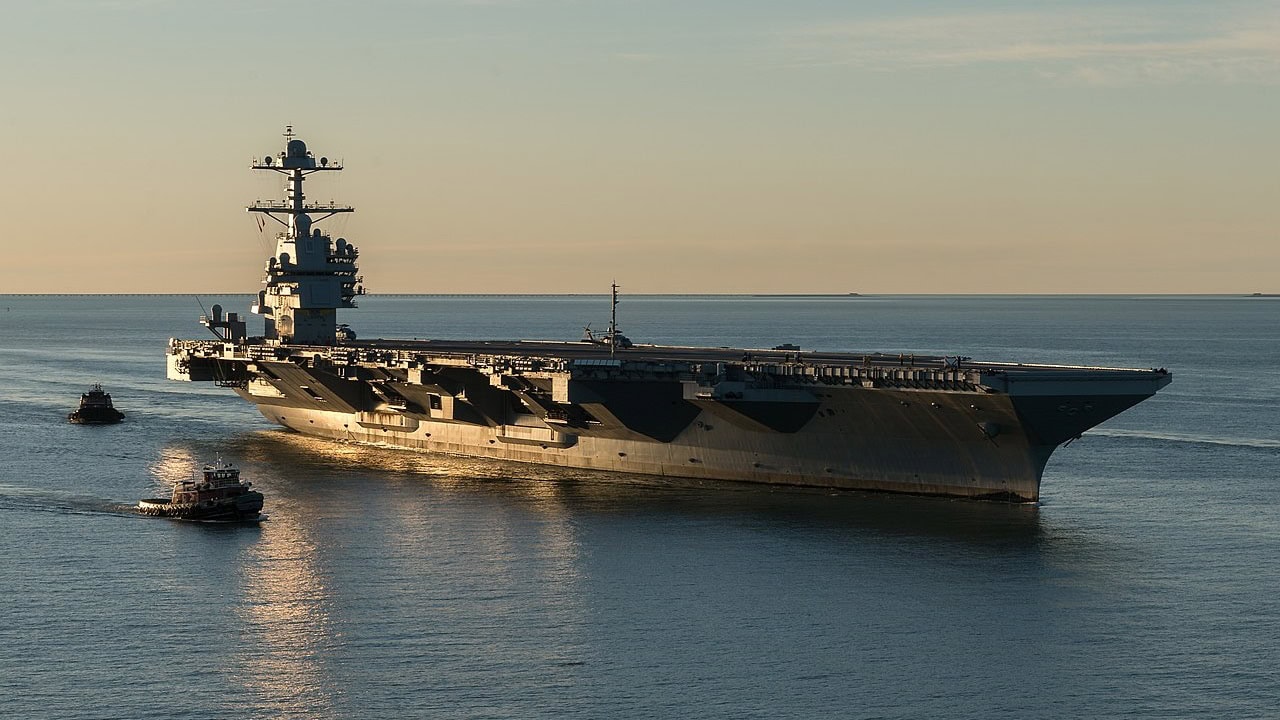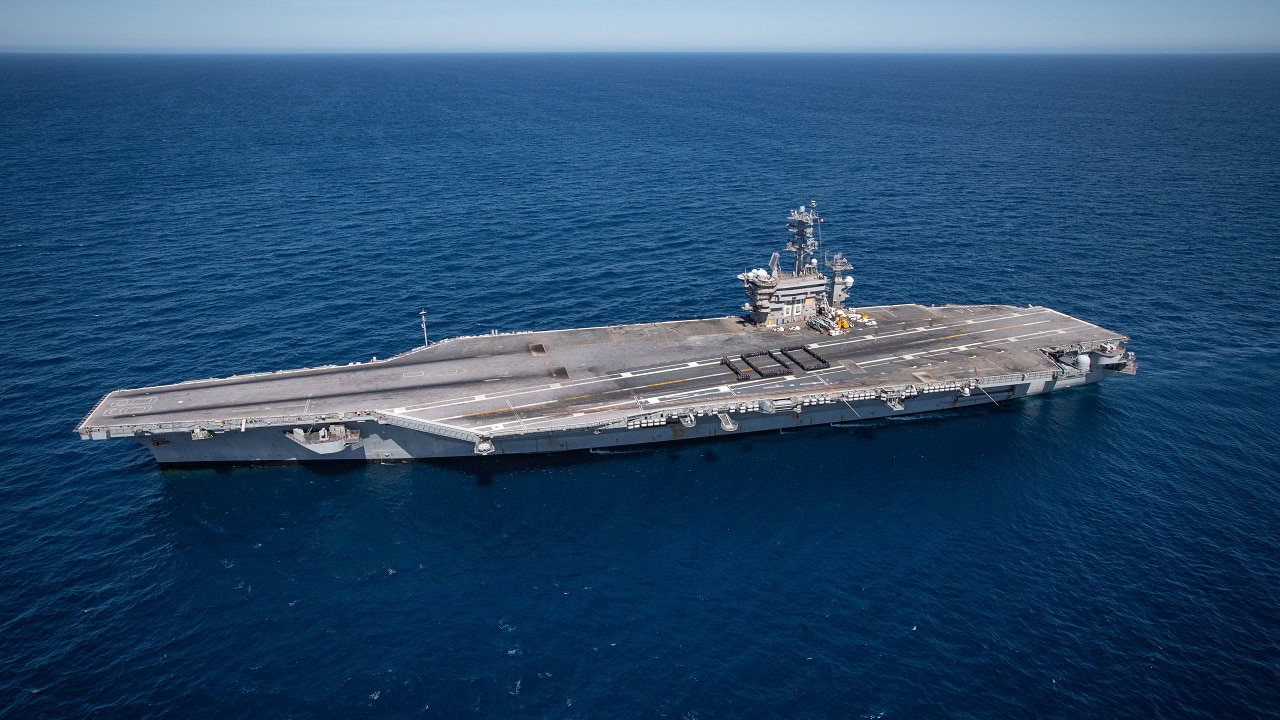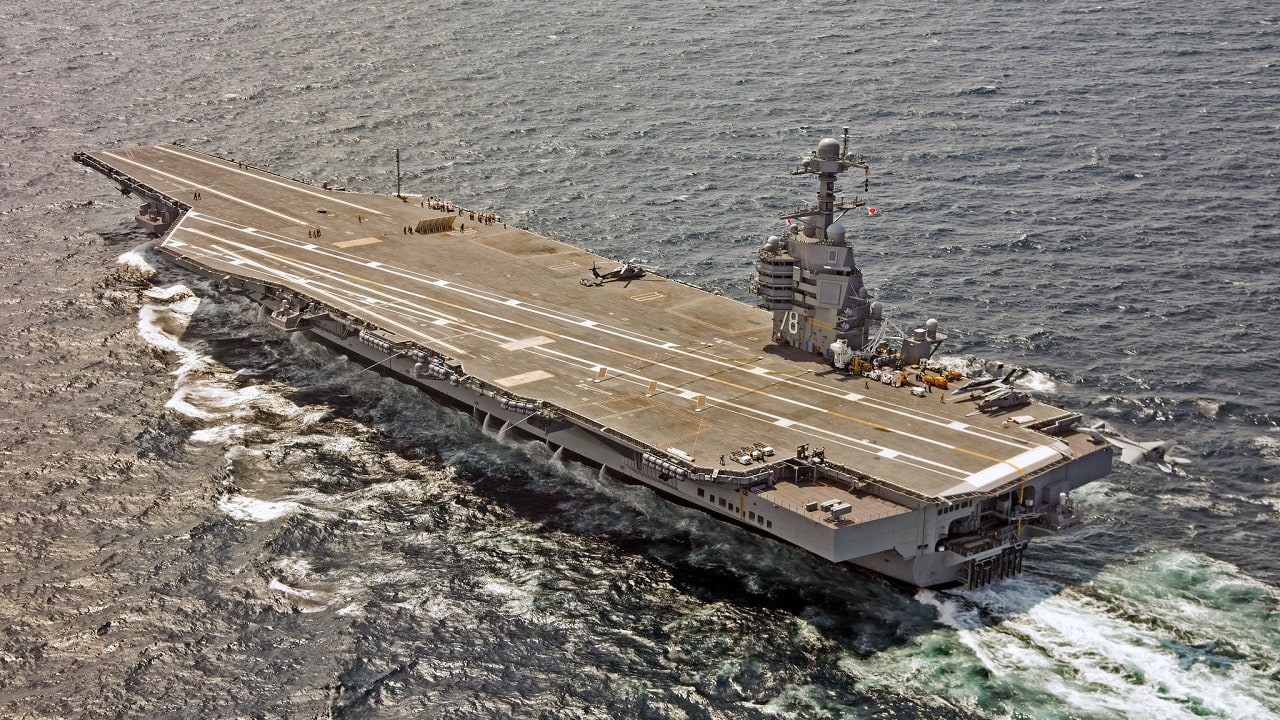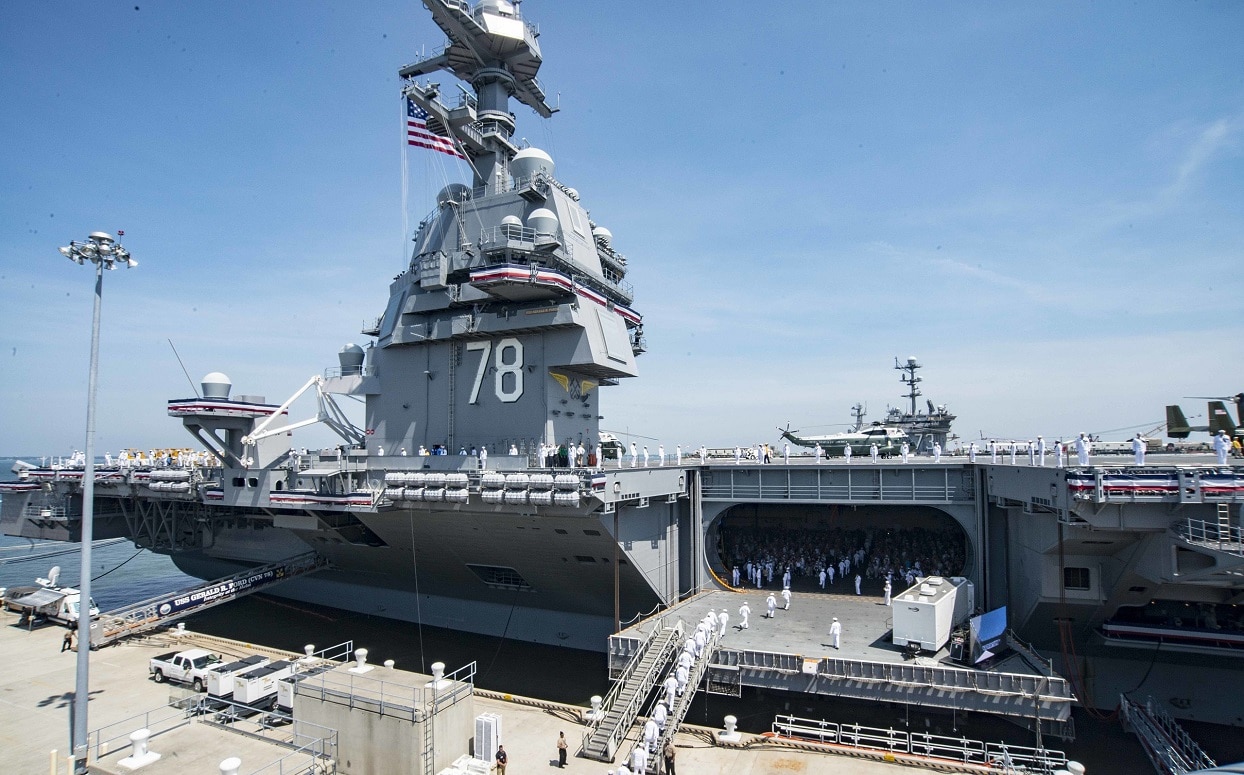The US Navy Ford-class aircraft carrier program already has a long and fascinating history. Some would say this class of carriers has suffered from a problem no one saw coming: a crushing avalanche of tough press declaring the new warships a problem.
However, this article will focus on the positive aspects of this new class of aircraft carriers, which some experts have declared the best to sail.
The first carrier of the class, the USS Gerald R. Ford, was named after the 38th president, who served in the Navy onboard an aircraft carrier called the USS Monterey in the Pacific during World War Two.
The late Commander-in-Chief served in three battles. Workers started construction on the Gerald R. Ford in 2005, and it was christened in 2007. The Gerald R. Ford carrier cost $13 billion.
Northrop Grumman Lands Large Contract for Ford-Class
In 2008, Northrup Grumman was awarded a $5.1 billion seven-year contract to develop the carrier to replace the Nimitz-class.
“This work allowed shipbuilders to test the design-build strategy, exercise new processes, prototype new features used on this ship before the overall construction contract was awarded, and to build a sufficient backlog of ship units to support production and undocking and delivery,” according to a company news release.
Keel-laying Ceremony
In 2009, the keel was laid in Newport News, Virginia. President Ford’s daughter, Susan Ford Bales, had her initials welded onto the ship. Builders announced that the carrier would have a bigger flight deck, better weapons and munitions handling, a new propulsion system, and a smaller island moved aft.
In 2010, Northrop Grumman received another $189.2 million contract for further design, engineering, and buildout efforts. “Now that the design is in the three-dimensional product model, our engineering and planning effort is focused on the production of instructions for the shops and ship assembly,” said Mike Shawcross, then the company’s vice president for construction of the vessel.
HII Enters the Project
In 2011, Huntington Ingalls Industries (HII) won a $504 million deal for more engineering activities. The next year, the contractor used a modular construction process in which smaller components were welded with larger ones.
In 2012, HII lowered the final keel section. This was a 680-metric-ton lower bow. Workers also completed many structural lifts for the final design.
In 2013, workers finished the island. The forward end of one of the catapults was placed on the flight deck. That year, a commander, Captain John F. Meier, took control of the pre-commissioning process.
Time for Christening of Ford-class
On November 9, 2013, the Ford was christened. “There is perhaps no more visible or powerful representation of America’s military strength than the hull that towers above us,” said then-US Senator Carl Levin, who was the main speaker. “No other nation makes carriers like America makes them, and this will be the most powerful American carrier ever to sail.”
In 2015, workers successfully tested the new Electromagnetic Aircraft Launch System. At least 1,600 sailors had their first meal on the Gerald R. Ford.
President Trump Leads Commissioning Day on Ford-Class
In July 2017, the Ford was commissioned, and President Donald Trump led the festivities. Secretary of Defense James Mattis noted that President Ford was part of the Greatest Generation and that the carrier is a “magnificent warship.”
Later that year, an F/A-18F Super Hornet made its first landing on the carrier. In November, the Ford conducted a nine-day Independent Steaming Exercise (ISE). More ISEs ensued. At the end of the year, the ship conducted the first underway replenishment (UNREP) with the United States Navy Ship (USNS) William McLean.
There were more adjustments to its propulsion system in 2018 and another 16-day ISE at the end of the year. Workers also conducted component shock testing.
In 2019, HII did maintenance and modernization work after the series of ISEs. Official sea trials began in October of that year. In 2020, the ship did Aircraft Compatibility Testing. Then, there was “flight deck certification and carrier qualifications” with a training air wing that year. In November, there were the first-ever Carrier Strike Group (CSG) operations.
Early shock trials began in 2021 for the Ford-class carrier. Then, the ship went through a Combat Systems Operational Readiness Exercise. In 2022, the Gerald R. Ford ported in Nova Scotia and England after shake-down cruises. Then, toward the end of the year, there was a 53-day cruise with the US 2nd and 6th Fleet.
By 2023, the Ford was regularly conducting replenishments at sea. Later that year, there was a four-day port of call in Norway and a visit to Croatia.
In 2024, the Ford completed an 8.5-month deployment with the 6th Fleet. In late January of this year, the Ford was underway conducting routine operations in the Atlantic Ocean.
As you can see, the Gerald R. Ford has been busy, proving what the Ford-class can do. It is hard to believe that construction began 20 years ago, and she was commissioned almost eight years ago. The Ford was expensive, and there were some technological hurdles, but it is doing its job properly and will be an important carrier in the future.
It is amazing to see just how many milestones that the Ford-class has achieved over the years. It shows that carriers are complicated and complex ships that require oodles of money and time to work out all the kinks.
The Gerald R. Ford is off to a good start, and it has shown just how much potential the floating air base has to wage war someday.
Ford-Class: A Photo Essay

From 2017 – The aircraft carrier Pre-Commissioning Unit (PCU) Gerald R. Ford (CVN 78) pulls into Naval Station Norfolk for the first time. The first-of-class ship – the first new U.S. aircraft carrier design in 40 years – spent several days conducting builder’s sea trails, a comprehensive test of many of the ship’s key systems and technologies. (U.S. Navy photo by Matt Hildreth courtesy of Huntington Ingalls Industries/Released)

Ford-Class. Ford-Class Aircraft Carrier USS Ford.

(Mar. 12, 2022) Sailors aboard USS Nimitz (CVN 68) assemble on the flight deck and form a human ‘100’ to commemorate the centennial of the aircraft carrier. On March 20, 1922 the former USS Jupiter (Collier #3) recommissioned as the USS Langley (CV 1), the U. S. Navy’s first aircraft carrier. One hundred years later, Nimitz and Ford-class aircraft carriers are the cornerstone of the Navy’s ability to maintain sea control and project power ashore. Nimitz is the first in its class and the oldest commissioned aircraft carrier afloat., carrying with it a legacy of innovation, evolution and dominance. Nimitz is underway in the 3rd Fleet Area of Operations. (U.S. Navy photo by Mass Communication Specialist 3rd Class Elliot Schaudt)

NEWPORT NEWS, Va. (April 8, 2017) – Pre-Commissioning Unit Gerald R. Ford (CVN 78) Sailors man the rails as the ship departs Huntington Ingalls Industries Newport News Shipbuilding for builder’s sea trials off the coast. The first- of-class ship—the first new U.S. aircraft carrier design in 40 years—will spend several days conducting builder’s sea trials, a comprehensive test of many of the ship’s key systems and technologies. (U.S. Navy photo by Chief Mass Communication Specialist Christopher Delano).

Ford-Class Aircraft Carrier Artist Rendering. Image Credit: Creative Commons.
About the Author: Dr. Brent M. Eastwood
Brent M. Eastwood, PhD, is the author of Don’t Turn Your Back On the World: a Conservative Foreign Policy and Humans, Machines, and Data: Future Trends in Warfare, plus two other books. Brent was the founder and CEO of a tech firm that predicted world events using artificial intelligence. He served as a legislative fellow for US Senator Tim Scott and advised the senator on defense and foreign policy issues. He has taught at American University, George Washington University, and George Mason University. Brent is a former US Army Infantry officer. He can be followed on X @BMEastwood.

